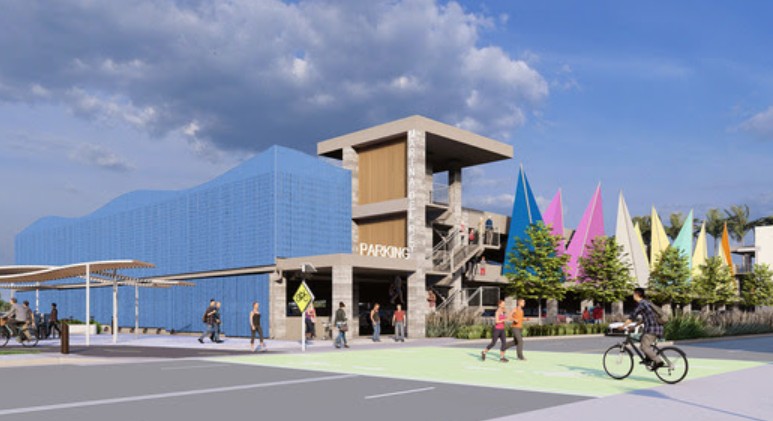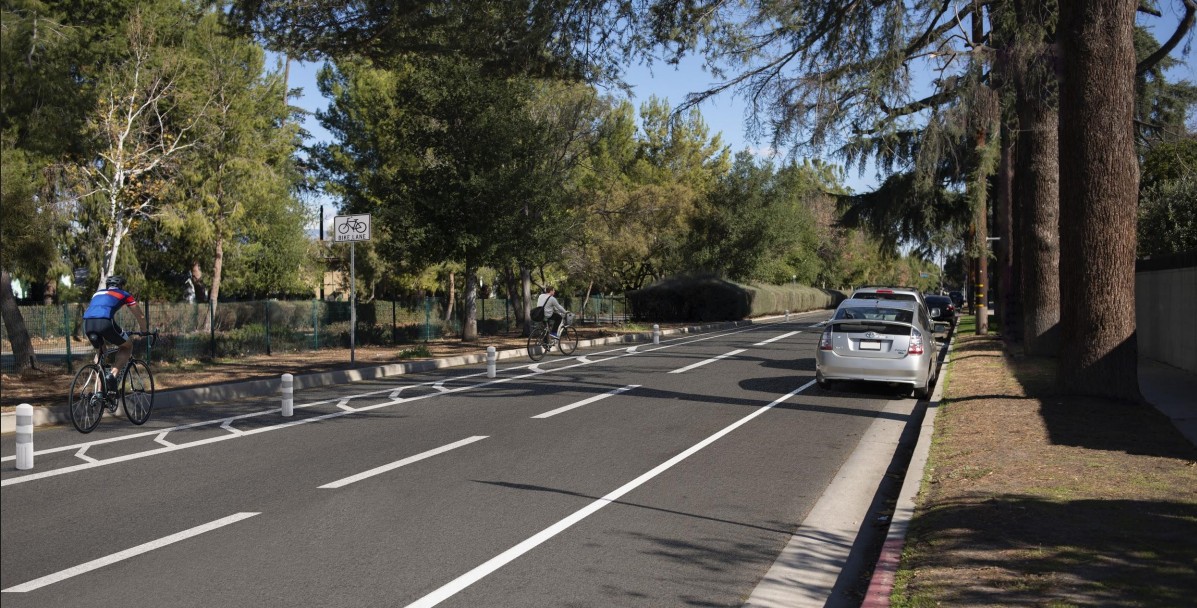Streetfilms featured Los Angeles' Orange Line BRT and bike path in 2009. A new UCLA report says infrastructure projects like the Orange Line are a better way to invest cap-and-trade funds than CA High-Speed Rail.
UCLA's Lewis Center published a report yesterday finding that California's High-Speed Rail project is a relatively expensive way to reduce greenhouse gas emissions (GHG) in the near-term, compared to upgrading local transit and bicycle infrastructure.
Comparing CAHSR to Los Angeles Metro's Gold Line light-rail and Orange Line bus rapid transit route and bikeway, the report finds high-speed rail to be the least cost-efficient investment the state could make.
The high-speed rail project costs more per metric tonne of GHG emissions than the current cost of allowances under cap-and-trade, the report says. If the savings costs to users are included in the calculations, then the light-rail, busway, and bikeway projects cost far less than the cap-and-trade auction price, which makes them more cost-effective ways to meet the emission reduction goals set out in California's Global Warming Solutions Act, A.B. 32.
“There are a lot of projects that can reduce GHG emissions,” said Juan Matute, one of the report's authors. “And differentiating between them will become more important in the future. One way is to look at the cost-effectiveness of the reductions.”
Governor Jerry Brown's proposed cap-and-trade expenditure plan includes $250 million for high-speed rail to be spent in the next year alone, but very little for other transit or bicycle and pedestrian projects. High-speed rail isn't scheduled to be online until 2022, so the savings it yields won't help meet the state's 2020 emission reductions goals. Meanwhile, the funds could be used for more local investments such as transit services or bicycle and pedestrian connections that would reduce GHG emissions more quickly.
The report's authors, Matute and Mikhail Chester, compared life-cycle costs of the projects, including construction and operation, and estimated emission savings based on peer-reviewed estimates of how many people would shift from driving to using each of the new facilities. They also looked at the amount of money that users save on each type of transit.
"It's about mode shift," said Matute. Light-rail attracts the highest portion of commuters to shift from driving among transport modes (light-rail projects typically yield a 52 percent shift). But the Orange Line bike path, which only sees about a 4.5 percent shift from driving, yielded the highest per-rider emissions reduction due to the low cost.

"Anything that costs more than $11.48 per metric tonne of emissions (the current price under California's cap-and-trade auctions) is a less cost-effective way to achieve emission reductions," said Matute. "At the current price, high-speed rail's cost of $361 per metric tonne is very high."
The report estimated the transportation costs individuals save on by taking transit. “Greenhouse gas emissions aside,” said Matute, “the Gold and Orange lines produce cost savings to their users.”
(Juan Matute serves on the Board of Directors of the Southern California Streets Initiative which co-publishes Streetsblog Los Angeles with OpenPlans.)






